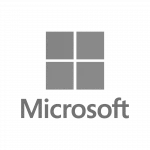Microsoft Network Load Balancer VS Linux Virtual Server Load Balancer
COMPARISON AMONG MICROSOFT NETWORK, LINUX VIRTUAL SERVER AND RELIANOID LOAD BALANCER
What is Microsoft Network Load Balancer
Microsoft Network Load Balancing (NLB) is a built-in capability in Windows Server that improves application performance and uptime by spreading incoming traffic across multiple servers. This helps prevent any single server from becoming a bottleneck, enhancing both the scalability and dependability of services. Operating at the network layer—specifically Layers 3 and 4—NLB uses methods such as round-robin and client affinity to distribute requests evenly among available resources. With NLB in place, administrators can ensure more efficient handling of client traffic, resulting in better overall system responsiveness.
A key advantage of Microsoft NLB is its support for fault tolerance. In the event that one server in the load-balanced group goes offline, NLB automatically detects the issue and reroutes incoming requests to the remaining active servers. This automatic failover maintains service continuity without requiring manual adjustments. Unlike hardware-based alternatives, Microsoft’s NLB is entirely software-driven, making it a more affordable and easily deployable option for managing traffic distribution in Windows-based networks.
What is LVS Load Balancer
A Linux Virtual Server (LVS) Load Balancer is a powerful and scalable solution built to efficiently manage and distribute network traffic across multiple backend systems. Integrated into the Linux kernel through the IP Virtual Server (IPVS) module, LVS functions at the transport layer, primarily handling TCP and UDP traffic. It balances incoming requests among several servers to improve application availability and system scalability, ensuring no individual server is overloaded. LVS supports multiple operation modes—such as NAT (Network Address Translation), DR (Direct Routing), and TUN (IP Tunneling)—offering flexible options for how traffic is managed and routed.
This type of load balancer is especially suitable for high-demand environments like large-scale websites, database clusters, or performance-intensive services. Its capacity to handle millions of concurrent connections makes it a reliable choice for enterprise infrastructures and data centers. Furthermore, LVS can be paired with high-availability tools such as Keepalived or Heartbeat to deliver redundancy and enable automatic failover in the event of hardware or software failures, guaranteeing service continuity. Its native compatibility with the Linux ecosystem empowers administrators to utilize open-source utilities while avoiding the expenses of commercial load balancing platforms.
WHAT IS RELIANOID
RELIANOID as alternative to Microsoft Network Load Balancer and LVS Load Balancer across key ADC capabilities
When comparing RELIANOID to Microsoft Network Load Balancer and Linux Virtual Server (LVS) Load Balancer, it becomes clear that RELIANOID offers a more modern and feature-rich solution tailored for today’s demanding environments. Microsoft’s NLB is limited to basic Layer 4 functionality within Azure and lacks advanced traffic management capabilities. LVS, while efficient at Layer 4 and widely used in Linux-based systems, requires complex configuration and lacks native support for Layer 7 features. RELIANOID combines the best of both worlds, offering full Layer 4–7 load balancing, HTTP/2 and mTLS support, SSL offloading, and real-time analytics — all within a lightweight and scalable architecture. Additionally, RELIANOID’s hot-restart capability and transparent licensing provide agility and cost-efficiency, making it a compelling choice for modern application delivery across cloud, on-prem, or hybrid infrastructures.
RELIANOID ADC
MAIN ADDED VALUES
How does RELIANOID differentiate itself in the crowded ADC market
compared to other vendors?
Limitless
We do not believe in limitations per core, memory or throughput. Our ADC solution performs with the maximum resources available.
HighTech
We research and develop open-source high tech products to deliver the best performance, scalability and high availability.
UX
We design user experience and automated interfaces to make application reliability technology easy.
Team
Our agile Team is always available to make your life easier and eliminate your pain.
WAYS TO
GET STARTED
RELIANOID ADC ADDITIONAL RELATED LINKS
Solutions
Maximize application performance, security, and availability across any environment with RELIANOID’s intelligent and scalable load balancing solutions.
Other Top ADCs
Compare the top load balancers and discover how RELIANOID stands out with unlimited performance, high-tech architecture, intuitive UX, and expert support—built to meet today’s enterprise demands without compromise.
Use Cases
See how organizations across sectors use RELIANOID to boost performance, cut costs, and secure critical services through high-availability load balancing and intelligent traffic management.
Compliance
Ensure trust, transparency, and resilience with RELIANOID’s robust security compliances, certifications, and policies designed to meet global cybersecurity standards and safeguard your critical infrastructure.
WANT TO KNOW MORE? CONTACT US
Just give us your contact details and we will get back to you as soon as possible.




